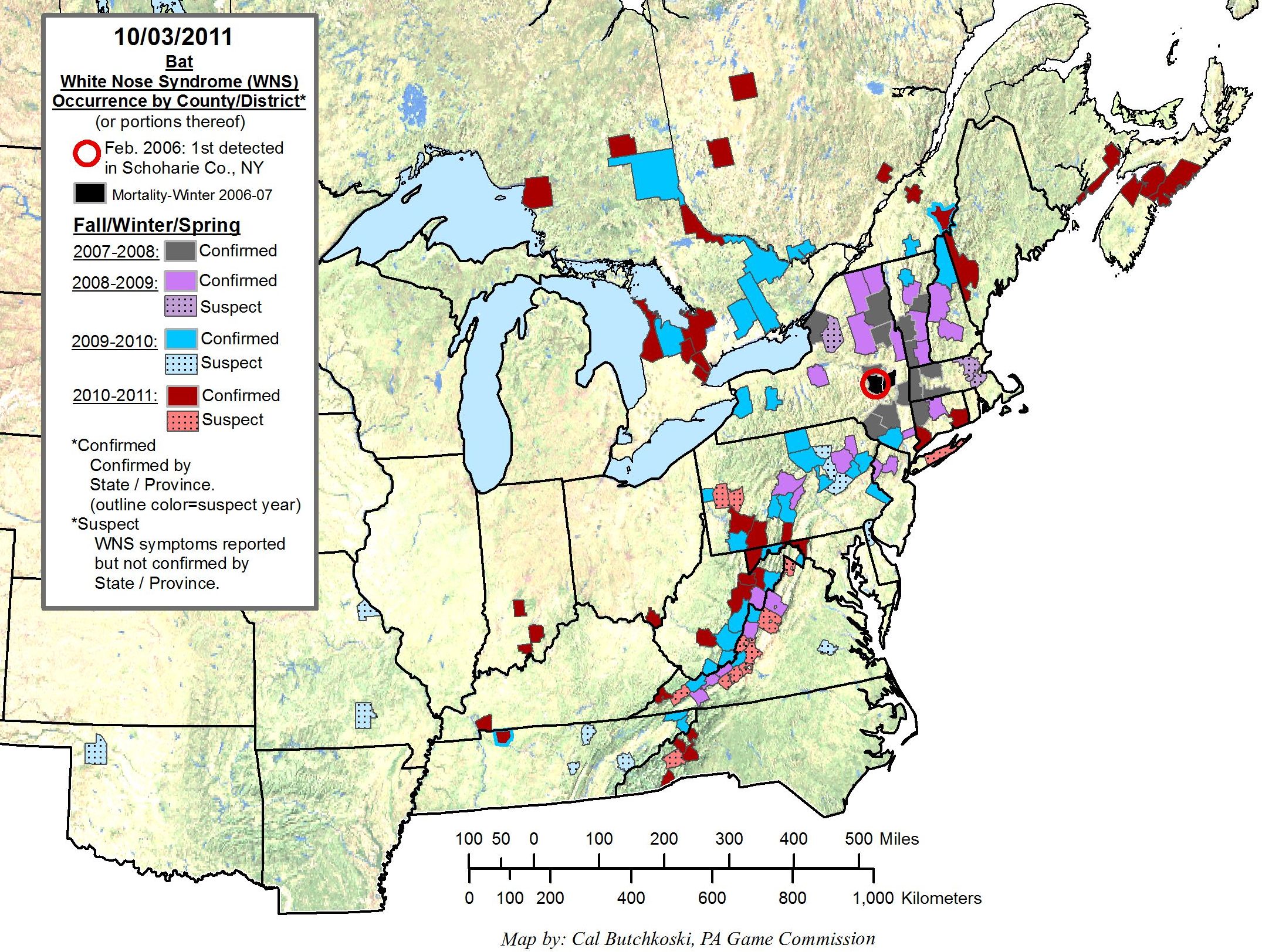The following is an October 26 News Release by the USGS:
The appropriately named fungus Geomyces destructans is the cause of deadly white-nose syndrome (WNS) in bats, according to research published today in the journal Nature. The study by U.S. Geological Survey scientists and partners, conducted at the USGS National Wildlife Health Center in Madison, Wisc., provides the first direct evidence that the fungus G. destructans causes WNS, a rapidly spreading disease in North American bats. “By identifying what causes WNS, this study will greatly enhance the ability of decision makers to develop management strategies to preserve vulnerable bat populations and the ecosystem services that they provide in the U.S. and Canada,” said Anne Kinsinger, USGS Associate Director of Ecosystems.
During the study, 100 percent of healthy little brown bats exposed to G. destructans while hibernating in captivity developed WNS. Additionally, the study demonstrated that G. destructans can be spread through contact between individual bats. “While our study confirmed that G. destructans is spread bat-to-bat, it is also important to note that virtually all pathogens, especially spore-producing fungi, are spread by multiple routes,” Blehert said. “This is the reason that in an effort to further control the spread of WNS, resource management agencies have implemented universal precautions, including limiting human access to sensitive environments occupied by bats, decontaminating equipment and clothing moved between these environments, and restricting the movement of equipment between sites.”
Insect-eating bats provide economically valuable ecological services that are estimated to save the U.S. agricultural industry alone billions of dollars each year in insect pest-control expenses. However, U.S. bat populations have been declining at an alarming rate since 2006, when white-nose syndrome first appeared in New York State. Since then, the fungus G. destructans has spread southward and westward and has now been found in 16 states and 4 Canadian provinces. Bat declines in the Northeast, the most severely affected region in the U.S., thus far have exceeded 80 percent.
This study was conducted by scientists from the USGS, University of Wisconsin-Madison, Wisconsin Veterinary Diagnostic Laboratory, University of Tennessee-Knoxville, New York Department of Environmental Conservation, the U.S. Fish and Wildlife Service, Wisconsin Department of Natural Resources, and Bucknell University. The article, “Experimental infection of bats with Geomyces destructans causes white-nose syndrome,” can be accessed online. More information about WNS can be found on the USGS National Wildlife Health Center website and the U.S. Fish and Wildlife Service website.

.jpg)


